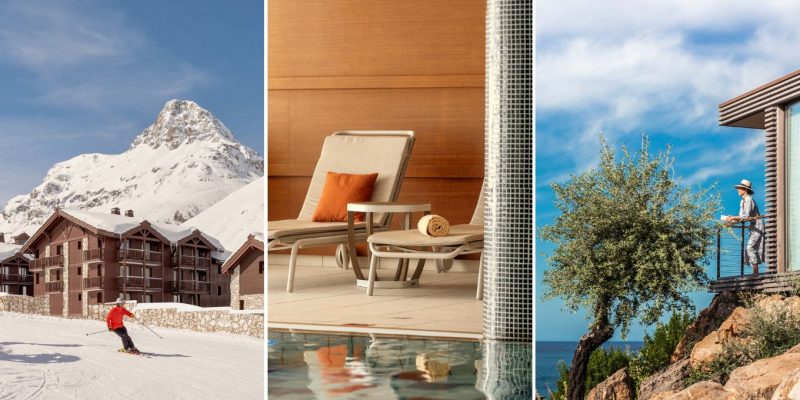Culture
Toast of the town: Italian vintner Ornellaia raises $126,500 for the AGO
by : Noreen Flanagan- Jun 18th, 2014
![Rodney Graham in ORNELLAIA 11 (media)[1]](https://storage.quebecormedia.com/v1/ellecanada_prod/elle_canada/6c1a33fb-a64a-4a3d-85ae-0a458bdabb20/Rodney-Graham-in-ORNELLAIA-11-media1-1024x681.jpg) Canadian artist Rodney Graham writing poems for Ornellaia I’Infinito wine auction to support the Art Gallery of Ontario. Photo: Courtesy of Ornellaia
Canadian artist Rodney Graham writing poems for Ornellaia I’Infinito wine auction to support the Art Gallery of Ontario. Photo: Courtesy of Ornellaia
I’m often reminded that I have a pretty good gig. Each week I end up meeting characters who are carving out uniquely inspiring or—at the very least—entertaining lives. Most recently, I crossed paths with vintner Marchese Ferdinando Frescobaldi. You don’t have to know the man to appreciate that this is one seriously posh name. It’s also the kind of family that has its own Wikipedia page because its lineage dates back to the Middle Ages. Hey, his relatives supplied Henry VIII with vintages and regularly traded wine for art with Michelangelo. Today, the family is still in the wine business—and they’re still supporting the arts. This past week, they were in town to auction nine lots of the 2011 vintage Ornellaia I’Infinito with proceeds going to the Ontario Art Gallery (AGO). “I am a 29th-generation farmer from Tuscany,” Frescobaldi told the tony crowd. “It is one of the most beautiful regions in this world. God has put his finger there. We have always had good relations with great artists.” For the past six years, they have worked with artists from around the globe to create one-of-a-kind labels for the auctions they’ve held at the Whitney Museum in New York, the Neue Nationalgalerie in Berlin, the Royal Opera House in London, the H2 Foundation in Hong Kong and the Poldi Pezzoli Museum in Milan. To date, they have donated more than $1.4 million, not including the $126,500 they raised last Thursday evening for the AGO. The artist for this year’s Vendemmia d’Artista (the name of the project) was Canadian Rodney Graham. The 11 labels that the Vancouver-based conceptual artist created were done using traditional printing techniques. Even though Graham isn’t a poet by trade, he decided to embrace the poetic theme of infinity by penning verses for each of the bottles. “I took on the persona of a poet—in this case, the author of light verse,” he explained. “Some of the poems I wrote are about wine, some are written under the influence of it.” Later, at my table, Graham joked about not knowing anything about wine. “I’m not a wine aficionado—but I liked the idea behind the project, and going to Tuscany to the vineyards was amazing. And I think they chose me because they hoped I would take a picture of some trees,” he said, pointing to the large upside-down oak tree photograph hanging to the left of our table.
Top: The oak tree from the Ornellaia estate. Bottom: Rodney Graham’s upside down image of the tree.
One of Graham’s most seminal series was a group of photographs of upside-down trees. He wanted to reference the origins of photography by capturing the inverted and reversed images created by using a camera obscura. He also “wanted to draw attention to the process of rationalization whereby we frame and define our vision of the world," he explained. "You don’t have to delve very deeply into modern physics to realize that the scientific view holds that the world is really not as it appears. Before the brain rights it, the eye sees a tree upside down in the same way it appears on the glass black of the large-format field camera I use. I chose the tree as an emblematic image because it is often used in diagrams in popular scientific books and because it was used in de Saussure’s book on linguistics to show the arbitrary relation between the so-called signifier and the signified.” As for the centuries-old tree in Tuscany, Graham said he was drawn to the oak because of its iconic shape, which fit nicely into the horizontal frame. “But this one is hung too high,” he added.
READ MORE ELLE Cocktail: The Buffalo Soldier ELLE Cocktail: Lemon Raspberry Caipirinha ELLE Cocktail: The Shotgun Wedding
Newsletter
Join our mailing list for the latest and biggest in fashion trends, beauty, culture and celebrity.
Read Next

Fashion
Are Fashion Brands Getting Greener?
While the fashion industry is making a lot of noise about being more sustainable, a closer look shows that its earth-friendly commitments are often more illusion than reality.
by : Marouchka Franjulien- Apr 19th, 2024

Beauty
What Beauty Packaging Is Actually Sustainable?
We sought out leaders in the field to help us get to the bottom of the blue bin once and for all.
by : Victoria Christie- Apr 19th, 2024

Beauty
Tested and Approved: A Skin Saviour That Works While You Sleep
Wake up with your glowiest skin yet—even if you didn’t clock eight hours.
by : ELLE Canada- Apr 11th, 2024





